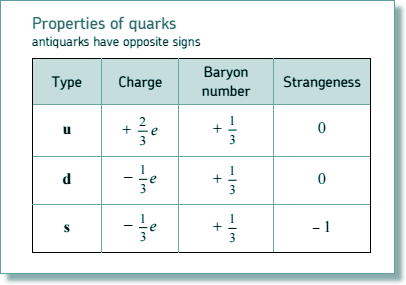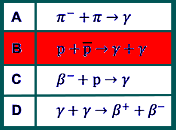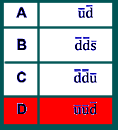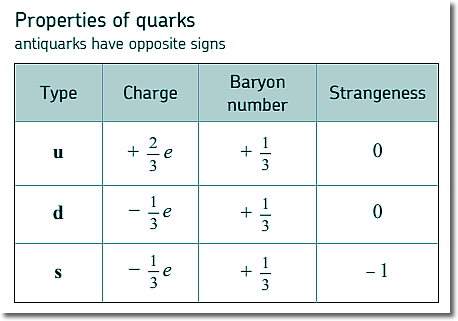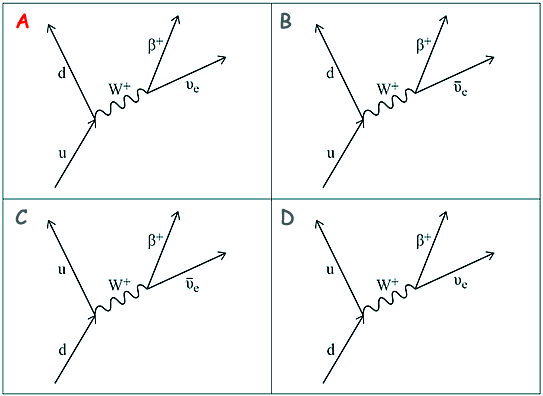Particle Physics Questions : Multiple Choice Q11.
Q12.
Q13.
Q14. Which of the following is not true?
Q15. Which equation shows the process of annihilation?
Q16. Which of the following is not made of quarks?
Q17. What is the quark structure for antiprotons?
Q18. The equation represents the weak interaction between a negative pion and a proton. π− + p → Ko + X What is the charge, baryon number and strangeness of particle X?
See here for notes on strange particles. Q19. Which diagram represents the process of beta-plus decay?
In positron decay a proton becomes a neutron: p so, quark change is: uud u Therefore it is either choice A or B To balance leptons we need a lepton to be formed as well as the antilepton (positron) - so choice A is correct.
|
Follow me...
|


